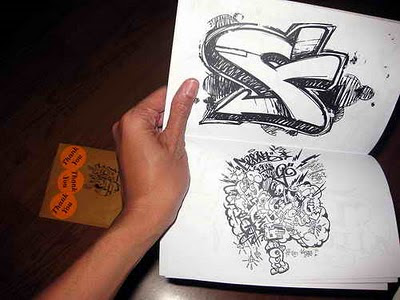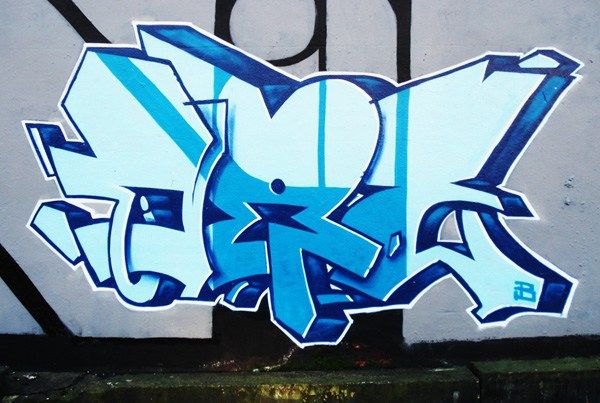
Samples of engraving by De Bry

----
Martin Schongauer (1448-1491), is the pioneer of the German engraving school . Gasper Schongauer, Martin's father , was a goldsmith at Colmar, where Martin was born. He apprenticed in his father's studio, where he learned both drawing and engraving. In 1465, he entered Leipzig University, and around 1469 he travelled to Burgundy and the Netherlands as journeyman. He started his engraving trade with copying directly from images by Rogier van der Weyden, Dieric Bouts and Jan van Eyck. After returning to Colmar in 1473 he painted his only dated panel painting , the 'Madonna im Rosenhag' for St Martin's in Colmar, and then in 1489 he began a period of mural paintings in Breisach Minster, but unfortunately before their completion he died, probably due to plague, in 1491.
During his relatively short life Schongauer completed close to one hundred and sixteen prints, which are among the most celebrated in the history of Western graphic art. His works are remarkable because of their strong compositional balance and the artist's sensitivity in dealing with human feelings. He invented cross-hatching, which provide a three dimensional impact . He established at Colmar an engraving movement, from which a number of later generation engravers emerged. According to Giorgio Vasari Michelangelo copied his work ; the "Trial of St Anthony." In general, his works were widely copied and imitated, sometimes even with his monogram. Among the most compelling of Schongauer's engravings are the series of the "Passion" and the "Death and Coronation of the Virgin", and the series of the "Wise and Foolish Virgins."

Samples of Schongauer's engraving

----
Albrecht Durer (1471- 1528), is the most imprtant German artist of the Renaissance era. He started his trade as an apprentice with his father, a Hungarian who had emigrated to Germany in 1455. Although they were practicing goldsmith in Nurenberg, Albercht were dabbing in painting by 1484 and in 1486 he became apprentice to the painter and printmaker Michael Wolgumut and began to work with woodcuts and copper engravings. At age 21 he went to Breisach to make Schongauer's acquaintance but met only his brother, who handed over drawings by the master to the aspiring artist.
Two years later, Durer travelled to Italy in 1494 and again 1505-7 and to Antwerp and the Low Countries in 1520-1, mainly to study painting and engraving techniques. During his second Italian trip to Venice He became acquainted with Giovanni Bellini and his brother-in-law Andrea Mantegna, both masters were at their advanced ages . Durer's journeys enabled him to synthesize the Gothic traditions of the German artists with the Italian perspective sensitivities to achieve a formidable compositional aesthetics. During the period 1496-8, Durer published a collection of his woodcuts based on the The Apocalypse of St. John, which perhaps was an indication of his support for the Reformation movement. Durer also created many portraits of the prominent people of his era including those of Emperor Maximilian I, Christian II of Denmark, 1521, Jacob Fugger as well as a number of other merchants, clergy and government officials. Durer explicated his theories on composition in The Four Books on Human Proportions, published posthumously in 1528.
Etching
Etching is the process of using strong acid or mordant to cut into the unprotected parts of a metal surface to create a design in intaglio in the metal. This technique is believed to have been invented by Daniel Hopfer of Augsburg, Germany.
----
A contemporary of D�rer's, Daniel Hopfer (1471-1536) is the most important member of a family of artists formerly of Kaufbeuren and later of Augsburg. Hopfer was a successful etcher of armour as well as a draughtsman and designer of wooodcuts for the printing of books. Hopfer's main body of work includes 154 iron-plate etchings. He worked on a broad range of themes including not only the scenes from everyday life, but also religious, historical and mythological compositions, as well as portraits, architectural depictions, ornamental designs and elaborate lettering. Prints with added texts, rather like flyers, were used to spread Protestant ideals and show the artist's familiarity with the Lutheran body of thought.
His copies of Italian masterpieces and variations on these themes are of far-reaching importance, and their reproduction assisted the rapid spread of the Renaissance throughout Germany.
Daniel Hopfer's prominence is ultimately due to his invention in the early 1490s of iron-plate etching. This process had been familiar to armourers for some time and used for the elaborate decoration of armour plate or swords by precisely etching with acid to produce incised ornamentation and figurative motifs that could then be blackened or gilded. Hopfer discovered that the areas eaten away by acid on plates that had been treated - or etched - in such a way were able to hold ink and could be used to print copies on paper. Hopfer was the first and by far the most productive etcher among his contemporaries. Hopfer's epochal invention ultimately led later generations to their breakthrough when etching finally replaced woodcuts and copperplate engraving almost entirely, and artists such as Rembrandt and Goya adopted the technique devised by Daniel Hopfer exclusively for their graphic works.

Examples of etching by Daniel Hopfer
A History of Typeface
The standard English typeface of the early 18th century was Caslon, named after William Caslon. The first of a family of English type founders, he was born at Cradley, Worcestershire in 1692. He was taken in as an apprentice engraver in London at the age of 13; by age 24 he had become a successful independent engraver and in 1716 started business in London as an engraver of gun locks and barrels, and as a bookbinder's tool-cutter . In 1720, Caslon began his career in type design by accepting a commission to create a typeface for the New Testament in Arabic. His subsequent roman typeface was an instant success. The distinction and legibility of his type secured him the patronage of the leading printers of the day in England and on the continent.
Based on specimen pages printed by William Caslon between 1734 and 1770
Caslon type fell into disuse at the start of the 19th century. But in 1844, Charles Whittingham initiated a Caslon revival by using the typeface to create an archaic effect for the Chiswick Press publication of The Diary of Lady Willoughby. This revival was taken up in America by L.J. Johnson, who copied the Caslon face in 1858, and sold it under the name "Old Style." Though often criticized, the Caslon typeface remains one of the most popular of all.
John Baskerville (1706, 1775) a towering figure in the history of English typography, he broke one tradition and started another. Baskervillle was born in the village of Wolverley, and was a printer in Birmingham, England. He was a member of the Royal Society of Arts, and an associate of some of the members of the Lunar Society. He directed his punchcutter, John Handy, in the design of many typefaces of broadly similar appearance.

John Baskerville printed works for the University of Cambridge in 1758 and, although an atheist, printed a splendid folio Bible in 1763. His typefaces were greatly admired by Benjamin Franklin, a printer and fellow member of the Royal Society of Arts, who took the designs back to the newly-created United States, where they were adopted for most federal government publishing. Unfortunately, his type was severely criticised due to the thinness of the strokes. Critics maintained that his type "hurt the eye" and would be "responsible for blinding the nation". It was a commercial failure and wasn't revived until the 1920s when many new fonts based on his work and mostly called 'Baskerville' have been released by Linotype, Monotype, and other type foundries.
Giambattista Bodoni (1740-1813) was born into a family of typographers in Italy. He moved to Rome, at the age of 18, where he was introduced to Cardinal Spinelli. After a trip to England, in 1766, a battle with malaria, he returned home. He then was hired by the Duke Ferdinand of Bourbon-Parma, as head of the Stamperia Reale. His early books show the influence of the types used by Pierre-Simon Fournier. He developed a dramatic, bold style, exemplified by the Epithalamia (1775), which celebrates the wedding of the sister of the French king Louis XVI.

Bodoni's mature style achieved a stark brilliance and Neo-classical purity, and from the 1780s he worked with his brother Giuseppe Bodoni to produce his own typefaces. He achieved an unprecedented level of technical refinement, allowing him to faithfully reproduce letterforms with very thin "hairlines", standing in sharp contrast to the thicker lines constituting the main stems of the characters. He became known for his designs of pseudoclassical typefaces and highly stylized editions some considered more apt "to be admired for typeface and layout, not to be studied or read." His most celebrated books include Q. Horatii flacci opera (Rome, 1791) and the two-volume P. Virgilii maronis opera (Rome, 1793). In 1806 he exhibited 14 of his books at the Exhibition of National Industry in Paris, where he was awarded gold medals. In 1810 he was granted a pension by Napoleon and awarded the Order of the R�union.
Firmin Didot (1764-1836) Firmin Didot was born in a Parisian dynasty that dominated French typefounding for two centuries. His family owned their own printing firm which was called the House of Didot. Firmin Didot created the first modern Roman typeface in 1784, and he�s remembered today as the namesake of a series of Neoclassical typefaces that exquisitely captured the Modern style. He also created the typeface Ambroise, which is a contemporary interpretation of various typefaces belonging to Didot�s late style, conceived circa 1830, including the original forms of g, y, &; and to a lesser extent, k.

The types that Didot used are characterized by extreme contrast in thick strokes and thin strokes, by the use of hairline serifs and by the vertical stress of the letters. Many fonts today are available based on Firmin Didot's typefaces. These include Linotype Didot and HTF Didot. In the second half of the 19th century, it was normal to find fat Didots in several widths in the catalogues of French type foundries, mostly alphabets of capitals only. The narrow versions were widely used for heavy titlings in theatre posters. These same typefaces continued to be offered by French foundries such as Deberny & Peignot (in Sp�cimen g�n�ral des fonderies Deberny & Peignot, Paris, 1955) until the demise of the last type foundries in France at the end of the 1960s.
Today many companies around the globe are using Helvetica typeface in their logos, these include; American Airlines, American Apparel, Comme des Gar�ons, Evian, Intel, Lufthansa, Nestl� and Toyota.
The font is also used on the logo of the UN High Commissioner for Refugees, the album sleeve of John Coltrane's "A Love Supreme," and all of the signage on the New York subway system.

It is belived that a typical Western consumer sees more than 3,000 corporate messages every day, and many of them are printed in Helvetica. In 2007, the Museum of Modern Art in New York celebrated its 50th anniversary by opening a "50 Years of Helvetica" exhibition and acquiring a set of the original lead type, making it the first typeface to become part of the museum's collection. According to Christian Larsen, curator of the MoMA exhibition; "Helvetica delivers a message quickly and efficiently without imposing itself ...When reading it, one hardly notices the letter forms, only the meaning, it's that well-designed. It's crisp, clean and sharply legible, yet humanized by round, soft strokes. Many type designers have said that they can not improve on it."
Max Miedinger and Eduard Hoffmann
Helvetica was developed in 1957 by Max Miedinger with Eduard Hoffmann in M�nchenstein, Switzerland. The font was originally called Neue Haas Grotesk based on a typeface called Schelter-Grotesk, the main aim of Helvetica as a typeface was to create something that was quite neutral and could be used on a wide variety of signage. The Name was changed to Helvetica in 1960 which was derived from Confoederatio Helvetica which is the Latin name for Switzerland, this was an idea to make it more marketable internationally.

The rebranding worked. Helvetica proved so popular, especially among U.S. advertising agencies, that it became the default typeface for any 1960s company wishing to project a dynamic, modern image.
By the late 1980s, Helvetica was ubiquitous. A digital version of the font, Arial, was introduced in 1990. Arial has since proved popular, but design buffs dismiss it as a cheap pastiche.
---
A history of Book Covers and Dust Jackets
raditionally, most manuscripts were covered in materials such as vellum or calf lather, but with the mass production of printed books, in the early nineteenth century, publishers began using cloth bound covers for their books. Given the need for transportation of the books from the printing firms to bookstores, publishers had to protect these delicate covers with book jackets. These early versions were simple functional dust jackets, which paid scarce attentions to the advertisement about the contents of the books. Most of these dust jackets were discarded by the bookstores upon receiving the books and thus very few of them have survived.
The Keepsake, published by Longmans of London in 1832 was covered by the earliest known printed dust jacket, which was illustrated by a photograph. Up to the last decade of the nineteenth century most of these jackets used typographical designs with no illustration. Russian artist Aleksander Rodchenko and English illustrator Aubrey Beardsley were among the most influential early book cover designers. Beardsley created artwork for Henry Harland's popular "Yellow Book" series of the 1890s. The dust jacket for The Shadow of a Dream, by William Dean Howell published in New York in 1890 is the first known dust jacket with illustration. The book cover designers of the early twentieth century used mostly decorative floral or scroll designs on a protective dust jacket, which had a cut out circle to reveal the title of the book and the name of its author. With the advancement in printing technology the costs of mass production of color printing were reduced substantially and printing on the flaps become possible. The book cover designers gradually began to use more artistic creativity in their designs, and publishers who noticed that a good design can attract the attention of prospective buyers and can improve the sales began to pay more attention to design.





References
- Davies, Martin. The Gutenberg Bible. London and San Francisco, 1996.
- Fusco,Tony.Posters, House of Collectibles,New York, 1990.
- Ing, Janet. Johann Gutenberg and His Bible: A Historical Study. New York and London, 1988.
- M. Rickards, ''The Rise and Fall of the Poster'', 1971 ;
- J. Barnicoat, A Concise History of Posters: 1870�1970, 1972
- D. Ades, The Twentieth Century Poster, 1984
- J. Barnicoat, Posters: A Concise History, 1985
- Tebbel, John William, A history of book publishing in the United States, R. R. Bowker Co., New York, 1972.





 Samples of engraving by De Bry
Samples of engraving by De Bry












